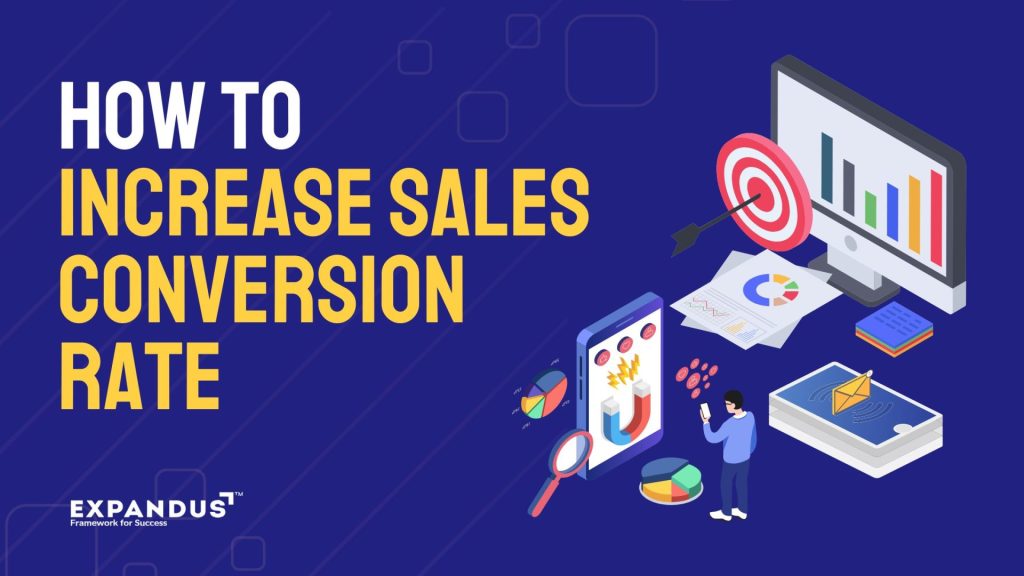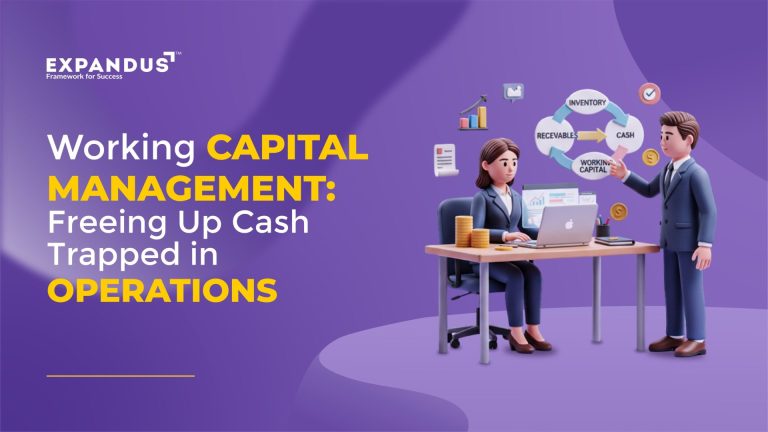How to Improve Your Sales Conversion Rate?
Conversion rate is a key number for businesses. It shows how well a company turns potential customers into actual buyers. This number is important for marketing teams, sales teams, call centers, and business experts. A higher conversion rate means happier customers, more trust, better returns on investment, and more growth for the company. So, it is important to improve sales conversion rate.
Imagine the sales process as a series of steps. First, someone visits your website. How many of those visitors start a free trial or have a conversation with you? Next, how many of those people move from a trial or conversation to a meeting or demonstration? Each step is a chance to improve sales conversion rate.
Whether you’re new to business or have a lot of experience, knowing and improving your conversion rate is crucial. But sometimes, this number can be misunderstood or used incorrectly. It’s important to check your conversion rates often to make sure they’re accurate and useful.
In this article, we’ll look at what sales conversion rates are, how to calculate them, and top tips to make them better. By understanding and improving your conversion rate, you can make more sales, keep your customers happy, and grow your business successfully.
Understanding Your Target Audience
Knowing your target audience is essential for improving your sales conversion rate. Understanding who your customers are helps tailor your marketing efforts, create better products, and develop strategies that resonate with potential buyers. In this section, we’ll explore the importance of identifying your target audience, share tips on gathering and analyzing customer data, and explain how to use this information to enhance your sales strategies.
Discuss the Importance of Knowing Who Your Customers Are
Understanding who your customers are is the first step in improving your sales conversion rate. When you know your target audience, you can create marketing messages that speak directly to their needs and preferences. This connection increases the likelihood of turning potential leads into actual customers. Knowing your audience helps you focus your efforts on the right people, saving time and resources while boosting your chances of success.
Tips on How to Gather and Analyze Customer Data
To understand your target audience, you need to gather and analyze customer data. Here are some tips to help you do this effectively:
- Use Surveys and Questionnaires: Ask your customers about their preferences, needs, and buying habits.
- Analyze Website and Social Media Analytics: Look at who visits your website and social media pages, and see what content they engage with.
- Customer Feedback: Collect and review feedback from customers about your products and services.
- Market Research: Conduct research to understand broader market trends and how they relate to your business.
By using these methods, you can build a detailed picture of your customers and their behaviors.
How to Use This Information to Improve Sales Strategies
Once you have gathered and analyzed customer data, you can use this information to improve your sales strategies. Here’s how:
- Personalized Marketing: Create personalized marketing campaigns that address the specific needs and interests of different customer segments.
- Product Development: Use customer feedback to improve existing products or develop new ones that meet customer needs better.
- Targeted Promotions: Offer promotions and discounts to specific customer groups who are most likely to respond positively.
- Enhanced Customer Service: Train your customer service team to address the specific concerns and preferences of your target audience.
By applying these insights, you can make your sales strategies more effective, increasing your conversion rates and growing your business.
Optimize Your Sales Funnel
Improving your sales conversion rate starts with optimizing your sales funnel. A sales funnel is a step-by-step process that guides potential customers from first learning about your business to making a purchase. By understanding how the sales funnel works and how to make each step more effective, you can turn more leads into customers.
Explanation of What a Sales Funnel Is and How It Works
A sales funnel shows the journey of a customer from the first contact with your business to the final purchase. It is called a “funnel” because it starts wide with many potential customers and narrows down as some drop off at each stage. The stages usually include:
- Awareness: Customers learn about your business.
- Interest: They show interest in what you offer.
- Decision: They decide they want to buy.
- Action: They make the purchase.
Each stage needs to work well to keep customers moving towards a purchase.
Strategies for Optimizing Each Stage of the Funnel for Better Conversions
To improve your sales funnel, you can use different strategies for each stage:
- Awareness: Use marketing tactics like social media ads, SEO, and content marketing to attract more people to your business.
- Interest: Provide valuable information and engage with potential customers through emails, webinars, and free trials to keep them interested.
- Decision: Offer clear and persuasive information about your products, like customer reviews and comparison guides, to help them decide to buy.
- Action: Make the buying process easy and smooth with simple checkout procedures, multiple payment options, and excellent customer service.
By improving each step, you can help more potential customers complete their journey through the funnel and become paying customers.
Enhancing Your Value Proposition
Your value proposition is a key part of improving your sales conversion rate. It tells potential customers why they should choose your product or service over others. In this section, we’ll explain what a value proposition is, why it’s important, give tips on how to create a strong one, and share examples of effective value propositions.
What is a Value Proposition and Why is it Crucial?
A value proposition is a clear statement that explains how your product or service solves a problem, what benefits it offers, and why it’s better than other options. It’s crucial because it helps customers understand the unique value you provide. A strong value proposition makes it easier for people to see why they should buy from you, which can increase your sales conversion rate.
Tips on Crafting a Compelling Value Proposition
Creating a compelling value proposition involves a few key steps:
- Understand Your Customers: Know what your customers need and what problems they want to solve.
- Highlight Benefits: Focus on the benefits your product or service provides, not just the features.
- Be Clear and Concise: Make your value proposition easy to understand with simple language.
- Differentiate Yourself: Explain what makes your product or service unique compared to competitors.
- Use Customer Language: Use words and phrases that your customers use and understand.
By following these tips, you can create a value proposition that clearly communicates the benefits of your product or service and attracts more customers.
If you want assistance with crafting a compelling value proposition, book a session with ExpandUs business coaching experts.
Examples of Effective Value Propositions
Here are some examples of effective value propositions:
- Uber: “The smartest way to get around. One tap and a car comes directly to you. Your driver knows exactly where to go. Payment is completely cashless.”
- Apple iPhone: “The Experience IS the Product. Connect with friends, family, and the world through the latest iPhone technology.”
- Slack: “Be more productive at work with less effort. All your communication in one place, instantly searchable, available wherever you go.”
These examples show how different companies clearly communicate the benefits and uniqueness of their products, making it easy for customers to understand why they should choose them.
By enhancing your value proposition, you can make a stronger impression on potential customers and improve your sales conversion rate.
Leveraging Customer Feedback
Listening to what your customers say can really help improve your sales conversion strategy. By understanding their experiences and suggestions, you can make better decisions that lead to more sales. In this section, we will discuss how important customer feedback is and how you can use it to make your products or services better.
The Role of Customer Feedback in Sales Conversion
Customer feedback is very important because it tells you what your customers like and don’t like. When customers share their opinions, they help you see where you can improve. If a lot of customers mention the same problem, fixing it can make them happier and more likely to buy from you again. Happy customers are more likely to recommend your business to others, which can also increase your sales.
Using Feedback to Make Product or Service Improvements
Using customer feedback to improve your products or services is key. Here’s how you can do it:
- Listen Carefully: Pay attention to what customers are saying in reviews, surveys, and social media comments.
- Identify Common Issues: Look for patterns in the feedback. If many customers mention the same problem, it’s a good idea to fix it.
- Make Changes: Use the feedback to make improvements. For example, if customers say your product is too hard to use, try to make it simpler.
- Communicate Back: Let your customers know that you’ve listened to their feedback and made changes. This shows that you care about their opinions and can encourage more sales.
By leveraging customer feedback, you can make your products or services better, making customers happy and increasing your sales conversion metrics.
Implementing Effective Call-to-Action (CTA) For conversion and sales
A Call-to-Action (CTA) is a key part of any sales strategy. It’s a simple message that tells your customers what to do next, like “Buy Now” or “Sign Up Today.” In this section, we’ll explain what a CTA is, why it’s important, and how to create powerful CTAs that can help improve sales conversion rate.
Explanation of What a CTA Is and Its Importance in Sales Conversion
A CTA is a clear and direct message that encourages your customers to take a specific action. It’s important because it guides your customers on what to do next, making it easier for them to make a purchase or sign up for your service. A good CTA can catch the customer’s attention and motivate them to act right away, which can lead to more sales.
Tips on How to Create Powerful CTAs
Creating effective CTAs is crucial for improving your sales conversion metrics. Here are some simple tips to help you make powerful CTAs:
- Be Clear and Direct: Use simple and clear language. Tell your customers exactly what you want them to do, like “Shop Now” or “Get Started.”
- Create Urgency: Encourage immediate action by adding a sense of urgency. Use phrases like “Limited Time Offer” or “Only a Few Left.”
- Make It Stand Out: Use bright colors and bold text to make your CTA button or link stand out on the page.
- Place It Strategically: Put your CTA where customers can easily see it, such as at the end of a blog post or in a prominent spot on your website’s homepage.
By implementing these tips, you can create effective CTAs that guide your customers to take action, helping to boost your sales conversion rate.
Utilizing Technology and Tools to improve sales conversion
Using the right technology and tools can greatly help improve sales conversion rate. These tools can make the sales process easier and more efficient, leading to more successful sales. In this section, we will look at different tools and technologies that can help boost your conversion rates and explain how they can make the sales process smoother.
Overview of Tools and Technology That Can Aid in Improving Conversion Rates
There are many tools and technologies available that can help improve conversion rates. Some of the most useful ones include:
- Customer Relationship Management (CRM) Software: Helps you keep track of customer interactions and manage leads more effectively.
- Email Marketing Tools: Allows you to send personalized emails to potential customers, which can increase the chances of making a sale.
- Analytics Tools: Provides data on how visitors interact with your website, helping you understand what works and what doesn’t.
- Live Chat Tools: Enables real-time communication with customers, helping answer their questions quickly and guiding them through the sales process.
Using these tools can help you better understand your customers and improve your sales strategies.
How Technology Can Streamline the Sales Process and Improve Efficiency
Technology can make the sales process much easier and more efficient. Here’s how:
- Automating Tasks: Tools can automate repetitive tasks like sending follow-up emails or scheduling meetings, saving time and reducing errors.
- Better Customer Insights: Analytics and CRM software provide valuable insights into customer behavior, helping you tailor your sales approach to meet their needs.
- Improving Communication: Live chat and email marketing tools make it easier to stay in touch with potential customers, answering their questions quickly and keeping them engaged.
- Tracking Performance: Technology allows you to track the effectiveness of your sales strategies, so you can see Software Sales Psychology and what needs improvement.
By utilizing technology and tools, you can streamline your sales process, work more efficiently, and ultimately improve your sales conversion strategy.
Wrapping It Up
Improving your sales conversion rate is key to growing your business. By understanding your target audience, leveraging customer feedback, and utilizing technology and tools, you can make your sales process more efficient and effective. Remember, it’s important to keep learning and adapting your strategies to stay ahead. Regularly review your methods, listen to your customers, and use the best tools available for conversion of sales. With these steps, you can boost your sales, keep your customers happy, and achieve long-term success.










